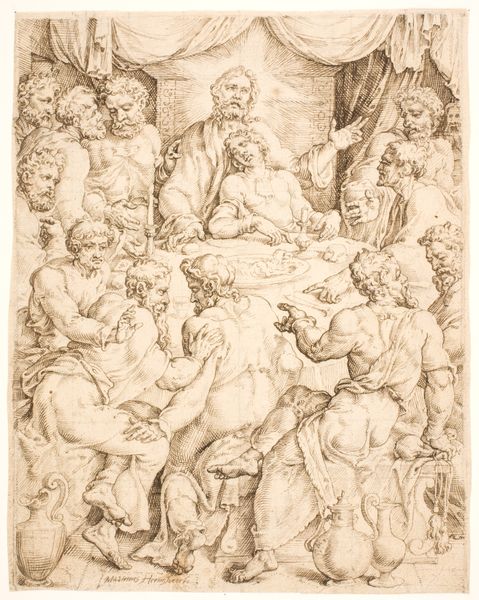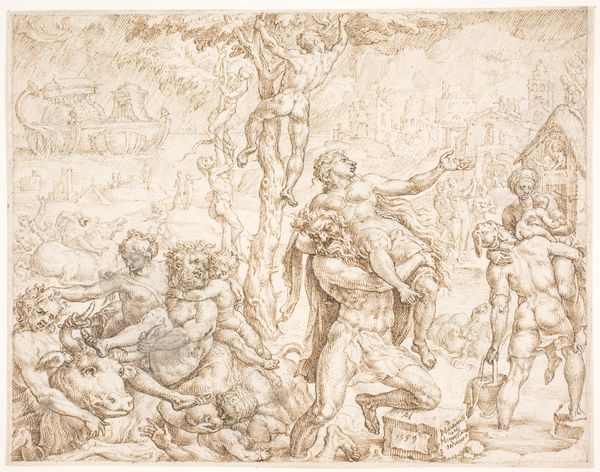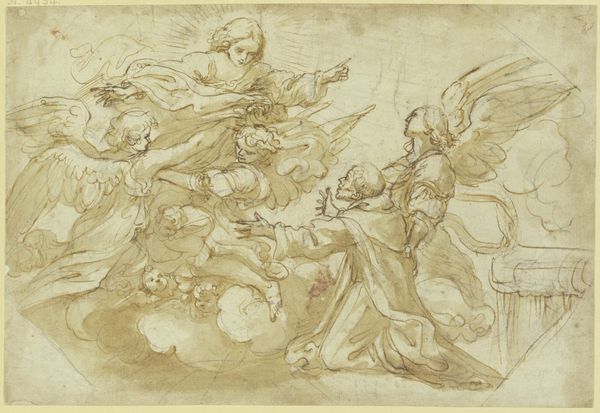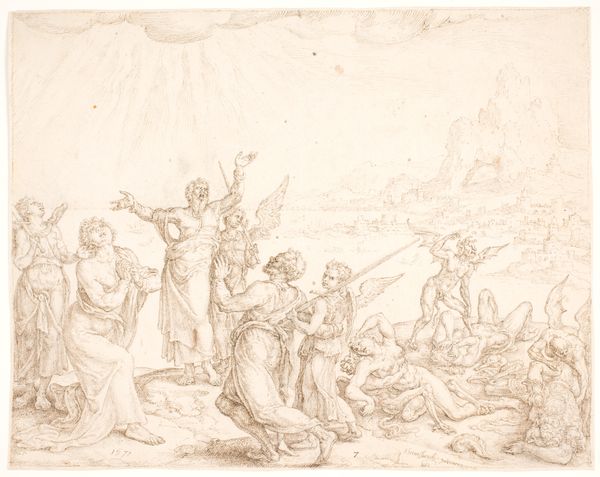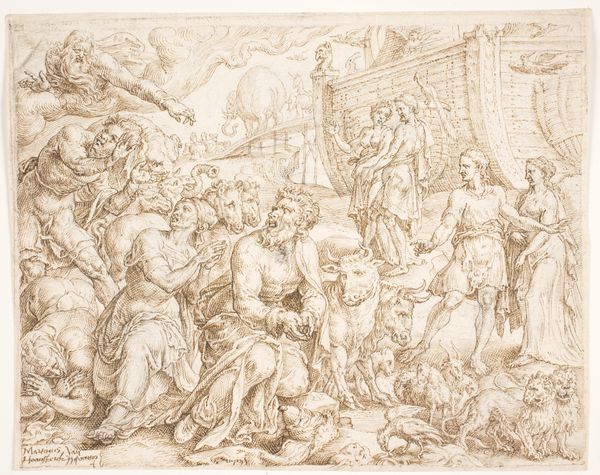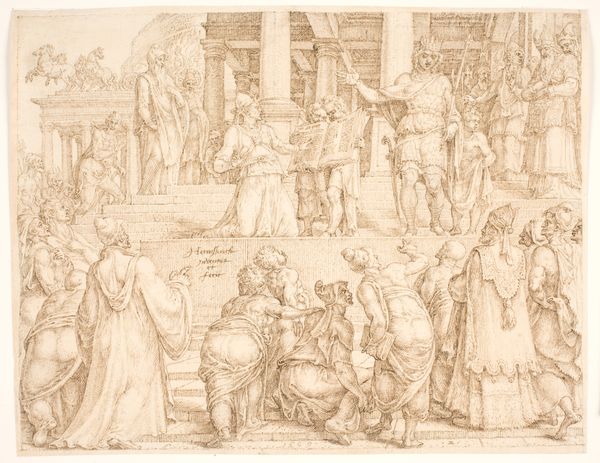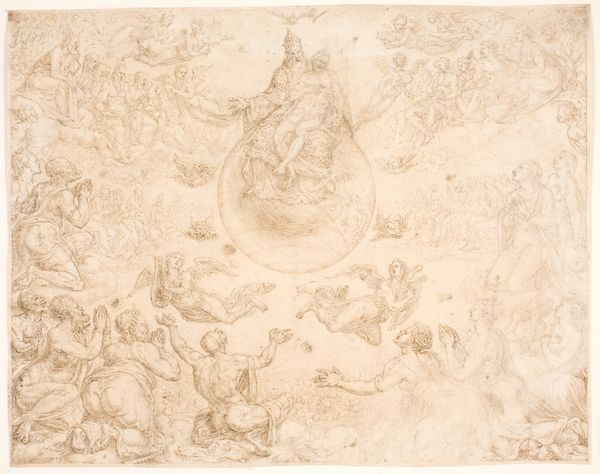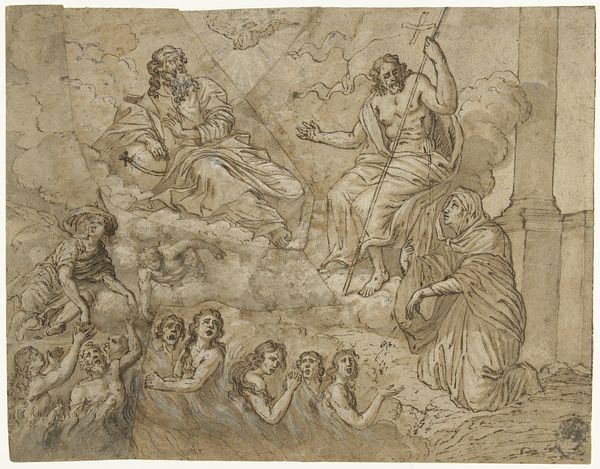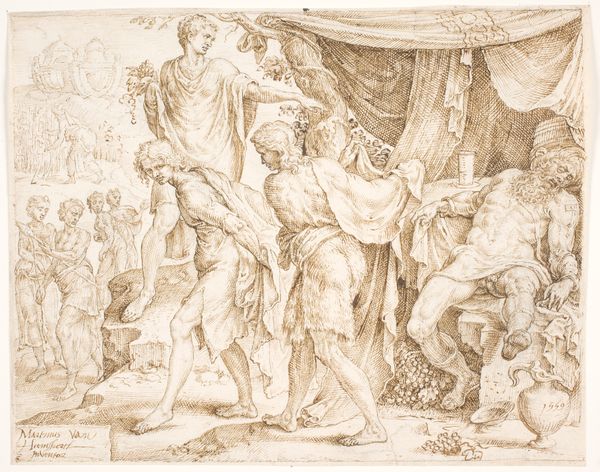
drawing
#
drawing
#
figuration
#
history-painting
#
northern-renaissance
Dimensions: 201 mm (height) x 255 mm (width) (bladmaal)
Curator: Immediately striking, isn't it? This drawing, dating from 1559, is "Noah's First Sacrifice" by Maarten van Heemskerck, held here at the SMK. Editor: Yes, it gives a distinct impression. The stark sepia tones and densely packed figures evoke both reverence and anxiety. I'm curious about the texture and the type of drawing material itself. Curator: Van Heemskerck, deeply engaged with classical sources, presents Noah's act after the flood. The figures and compositions signal that he's interested in much more than just a literal depiction; they suggest humanity's renewed covenant with God, a symbolic bridge spanning destruction and rebirth. Observe how God himself is in the image. Editor: Absolutely. It feels almost sculptural. The sharp lines and layering suggest it could have been an important method in Renaissance workshops to visualize narratives or scenes and perhaps a larger painted version. What specific types of labor were involved to build the structures that hold sacrifices, if any at all? Curator: Van Heemskerck masterfully uses the conventions of history painting to create something laden with theological weight. The figures' postures echo classical sculpture, their upturned gazes direct us toward a higher power and they create a palpable sense of awe and the beginnings of the world anew. The smoke going towards what seems like a ghostly form of some horses creates a unique element to show sacrifices from life on earth and their role in God’s memory. Editor: I’m more intrigued by the social aspect. The uniformity in dress hints at the social context where this art had the goal of social-normative teaching and its interpretation, while all working towards a specific type of moral. Who were these lessons designed for, exactly? Curator: That's the magic, isn't it? The layered symbolism and moral narratives speak to a culture grappling with its place in a world believed to be divinely ordered. Editor: True. So while one looks for grand narratives of divine covenant, the image holds fascinating hints to a labor- and teaching-intensive, stratified social fabric. Curator: It's fascinating how art of this period continues to resonate, sparking debates about our origins, beliefs, and place in the world. Editor: Indeed. And offering a revealing look at the cultural values etched into even the simplest lines on paper.
Comments
No comments
Be the first to comment and join the conversation on the ultimate creative platform.
